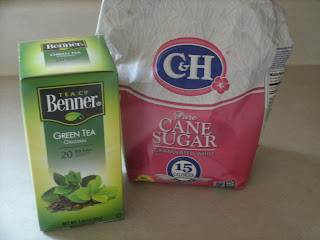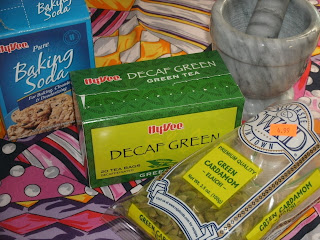Southern Africa
In the course of researching tea culture of southern Africa, I realized I had a primary source (albeit old).
brewing...
When I studied abroad in Kenya in May/June of 2000, I wanted to find some African published magazines. I picked these up at a book store in the Sarit Centre (a mall in Nairobi - I have no clue if that mall is still there). I was hoping for Kenyan magazines, but my choices were magazines from South Africa or Europe. As luck has it, I still have the 2 magazines I bought. I thought it would be a long shot finding anything about tea in them. Cosmopolitan proved me right. Fashionable people only drink overpriced mineral water and alcohol. At least they do if you believe everything you see in a magazine. Femina was an unfamiliar brand when I picked it up, but it proved to be a much more down to earth publication. After a minute or so flipping through the pages, I realized that I hit the jackpot.
Given the fact that I bought these magazines so far from South Africa, I have a feeling that they are a good representation for the countries in central Africa that I really couldn't find any information on. I had thought about going to the library to see if I could find any travel guides to those countries, but then I realized that the best library to do that research at was surrounded by drunken college students (or the reminders of their partying the night before). That particular library is also a real pain to get to because there is NO CONVENIENT PARKING. Seriously, they bought a book mobile to drive around town because they realized that a vast majority of the population was not going to the library because of the parking issue.
I didn't feel like trying to wrestle an old magazine onto my scanner (it was a bit stiff from age), so you will just have to live with photographs of an open magazine. In addition to advertisements, I also skimmed a couple of the health/wellbeing related articles, and found more references to tea. In all, I found reference to 12 different types of tea.
Ceylon (black tea)
Honeybush
Rooibos
Peppermint
Chamomile
St John's Wort with Rose Hips
Lipton
Green tea with mint
Green tea with jasmine
Herbal lemon tea
Fennel herbal tea
Honey herbal tea
It seems that bagged tea is popular here, as well. I decided to try a couple of teas that I don't normally drink (and I already had the stuff to make them in my cupboard - well, mostly).
I don't remember exactly why I have an old box of chamomile tea. I really don't like it. I describe it as tasting like something swept up off the barn floor. That said, I decided to brew it with some fennel seeds, mainly because I didn't want to try brewing the fennel alone. I'll admit that I didn't have high hopes for this tea. A few weeks ago I added fennel to some soup I was making. When I tasted it, I wondered what that funny taste was. Then I realized that the 1 change I made to my recipe was fennel. Oh well.
brewing...
As it turns out, my skepticism was not unfounded. Blah.
Since I didn't have any St. John's Wort (and didn't plan to get any), I decided to see what rose hips brewed by themselves tasted like. I know rose hips are added to things for vitamin C.
The verdict here is that you get vaguely flavored water. It does have a nice color, though. All in all, I think I'll stick to my black tea, peppermint (a favorite of mine), lemon tea, and green tea with mint.












P.S. I finally got another recipe posted on my other page http://123randomrecipes.blogspot.com/
ReplyDeleteIt's such a thrill to find something relevant to a project when you're going through old magazines and not sure they will have anything!
ReplyDeleteI was really amazed. I should look closer for other advertisements that pertain to everyday life. Granted, their adverts are a little different than ours. I happened to see one for plastic surgery that left nothing to the imagination.
Delete